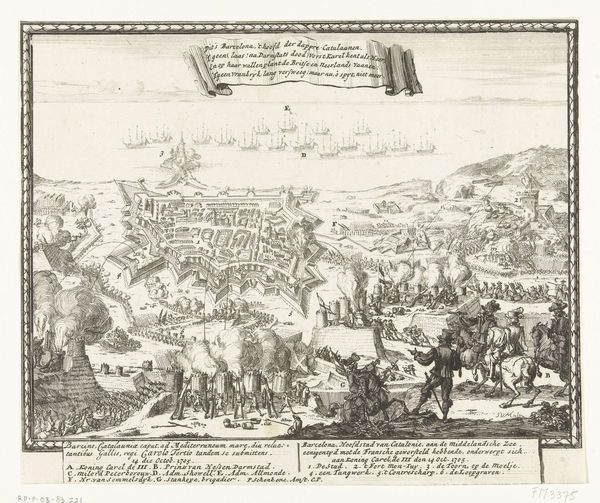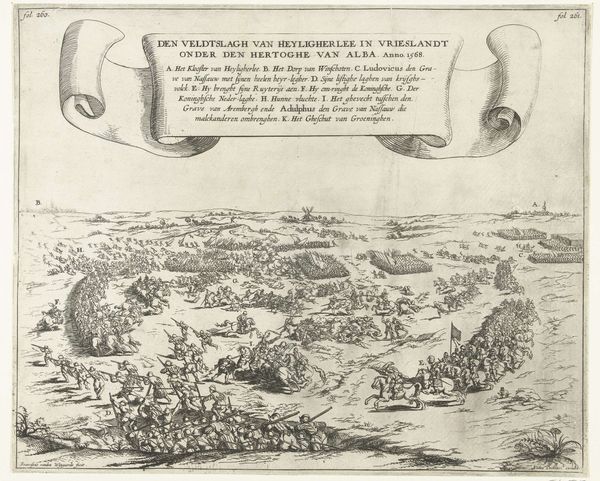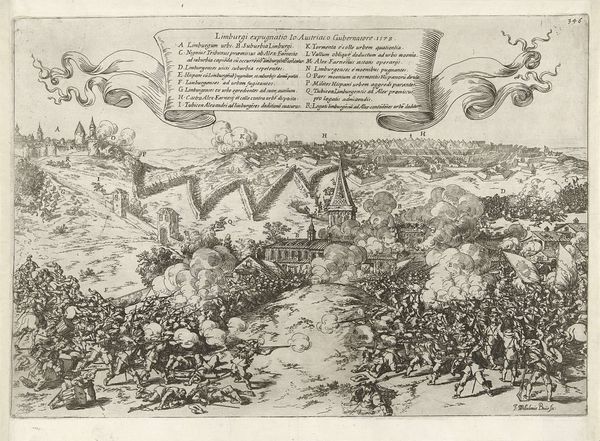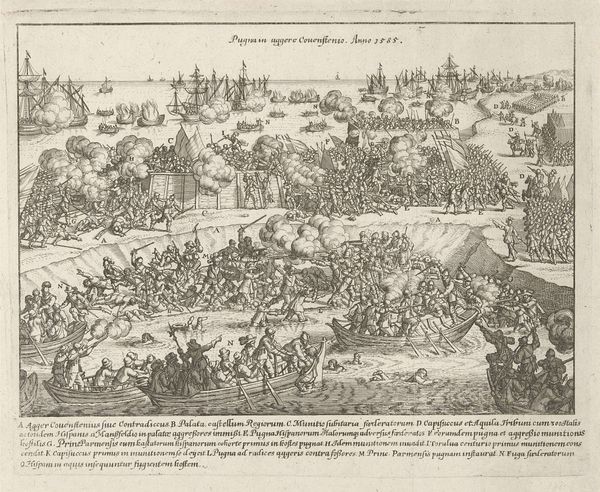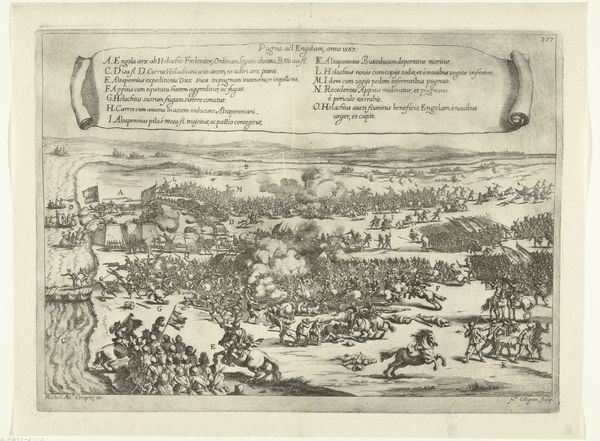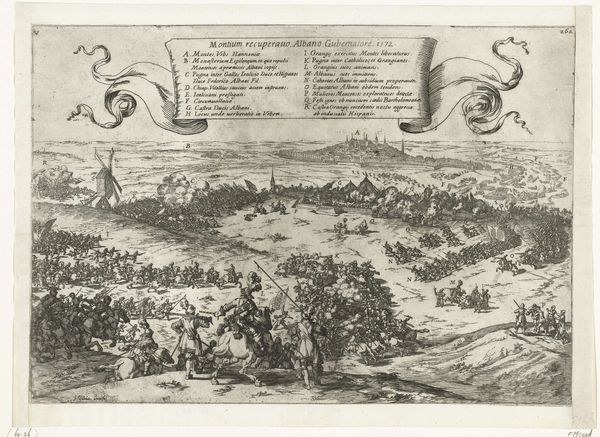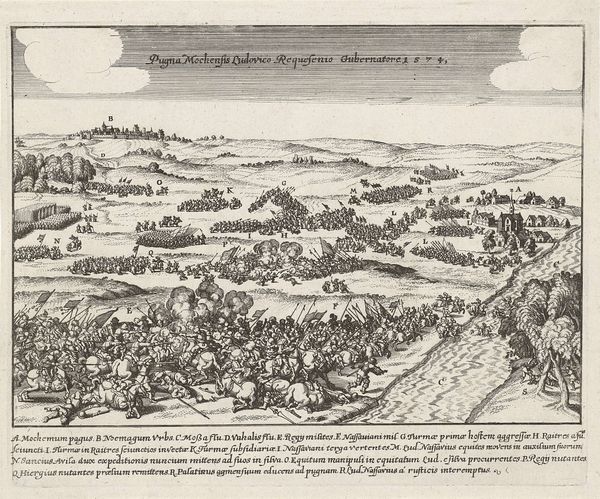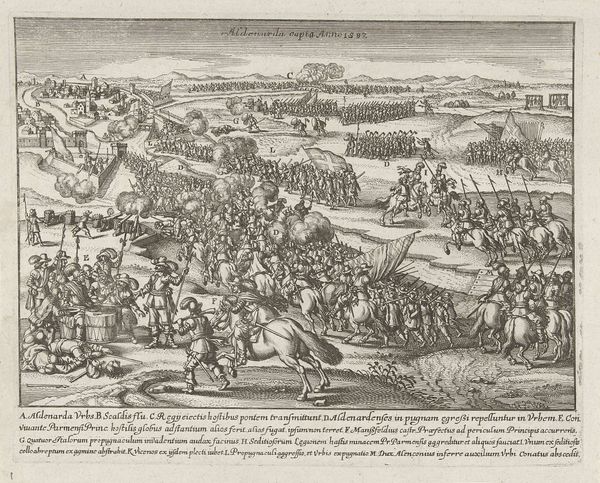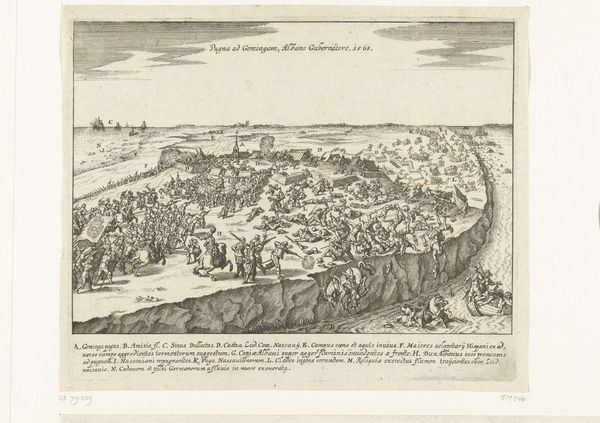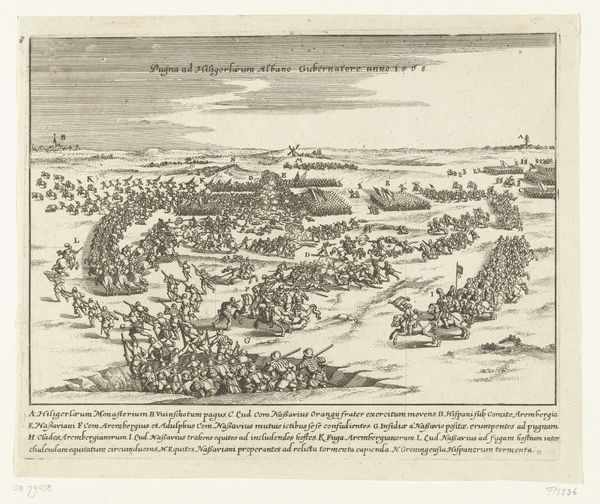
print, engraving
#
baroque
# print
#
landscape
#
genre-painting
#
history-painting
#
engraving
Dimensions: height 298 mm, width 422 mm
Copyright: Rijks Museum: Open Domain
Editor: Here we have Johann Wilhelm Baur's engraving, "Veldslag bij Rijmenam, 1578," created sometime between 1630 and 1632. It depicts a chaotic battle scene, almost like a bird’s-eye view of warring factions. What details do you focus on when you look at this piece? Curator: Immediately, I am drawn to how the artist uses symbolic shorthand to depict the battle. Notice the swirling masses of figures; they aren't necessarily realistic portraits of individual soldiers, but rather function as visual cues, triggering our cultural memory of conflict and resolution. Consider the almost diagrammatic arrangement of the forces; what does that evoke for you? Editor: It feels… ordered? Despite the chaos, there's a sense of deliberate composition, like a staged performance almost. Curator: Exactly! The ordered arrangement carries an interesting weight, doesn't it? Think about the scroll-like cartouches labeling the various locations and troop deployments. They give us an overview, as though imparting historical truth. In baroque imagery, these strategies help to transform real events into mythic and allegorical narratives. How might such choices impact a contemporary audience versus a viewer from the 17th century? Editor: So, it’s about shaping the viewer's understanding and memory of this battle? Curator: Precisely. It is also crucial to question how effectively those memories and beliefs are sustained across diverse cultural experiences. As an undergraduate art history student, you have an active role in such cultural debates, right? Editor: Absolutely, I see what you mean. It makes me consider how we visualize conflict and encode it with meaning, even today. Curator: And, understanding this artwork adds a rich dimension to how you will approach such themes from here on.
Comments
No comments
Be the first to comment and join the conversation on the ultimate creative platform.


